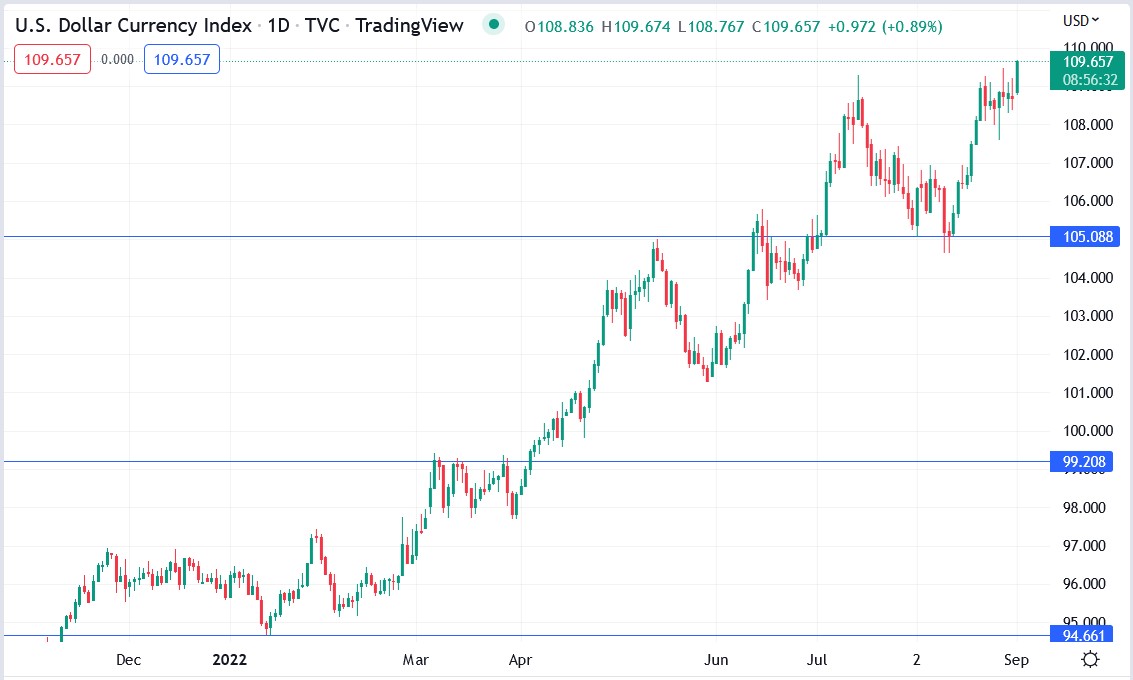Key points:
- The US Dollar Index kicked off the new month by rallying to a new record high.
- The dollar’s rally is fueled by expectations of a 75 basis points Fed rate hike.
- However, the strong dollar is hurting other developing countries.
The US Dollar Index kicked off the month of September on a high note as it rose to a new record high and was trading just below 110.00. Investors bid up the world’s reserve currency against other currencies ahead of tomorrow’s much-awaited non-farm payroll data.
Many now expect the US Federal Reserve to announce a 0.75% rate hike following Fed Chair Jerome Powell’s hawkish speech on Friday during the Jackson Hole symposium. Ahead of the speech, I argued that the Fed should consider pausing rate hikes and weakening the dollar, which has put many developing countries in danger of defaulting on their foreign debts.
Also read: Tips On How To Avoid Losing Money Trading Forex.
However, the Fed decided to stick to its hawkish stance in a bid to stem record-high inflation in the US, much of which is now being attributed to factors beyond the Fed’s control, such as the high crude oil prices, high costs of inputs due to scarcity, supply chain disruptions and high transport costs.
The impact of the Fed’s rate hikes mainly affects the money supply available to consumers and businesses that rely on cheap credit for growth, new mortgages and other investments. Therefore, there is a point at which the Fed’s rate hikes become pretty detrimental to the US economy and even the global economy.
Just like last year, when many experts warned the Fed that the inflation being witnessed in the US economy was real and that it would become entrenched if the Fed did not act, the Fed stuck to its assertion that the inflation was ‘transitory’ up to this year when the inflation was too high to ignore.
Now, many are warning the Fed to tone down its rate hikes, yet the Central Bank remains adamant that it will not stop hiking rates until next year, when it might be too late to save the US and global economy from a deep recession that could last for many months, maybe even years.
As the dollar gets more robust, the ripple effects will be seen across the US and the global economy as businesses, households and governments that hold dollar-denominated debts struggle to deal with the higher interest rates on their debts. Meanwhile, other central banks such as the ECB and the Swiss National Bank are playing catch up to the Fed.
*This is not investment advice.
US dollar index price chart.

The US dollar index (DXY) was up 92.4 pips (0.85%) at writing to trade at 109.53, rising from Wednesday’s closing price of 108.65.




